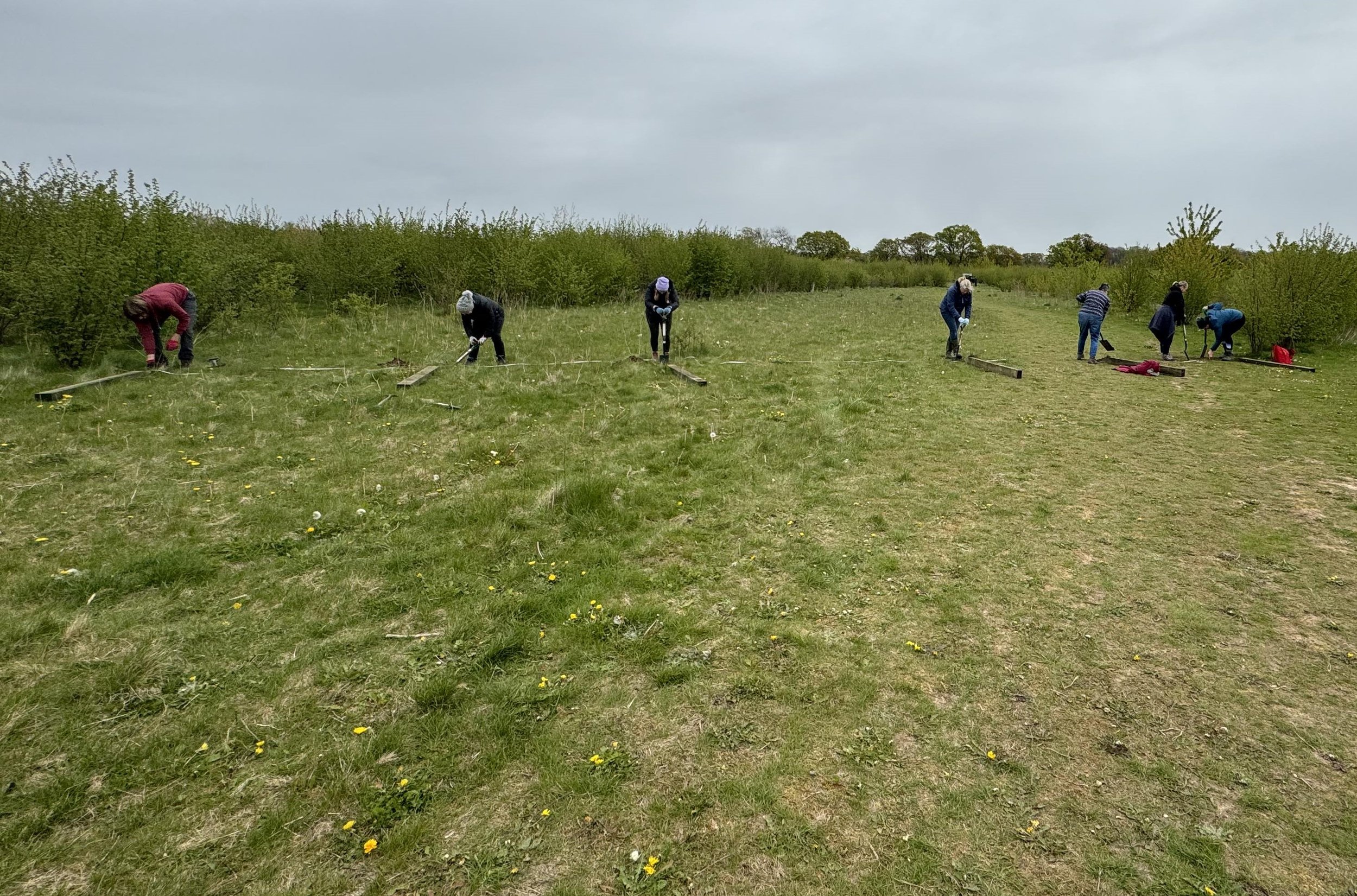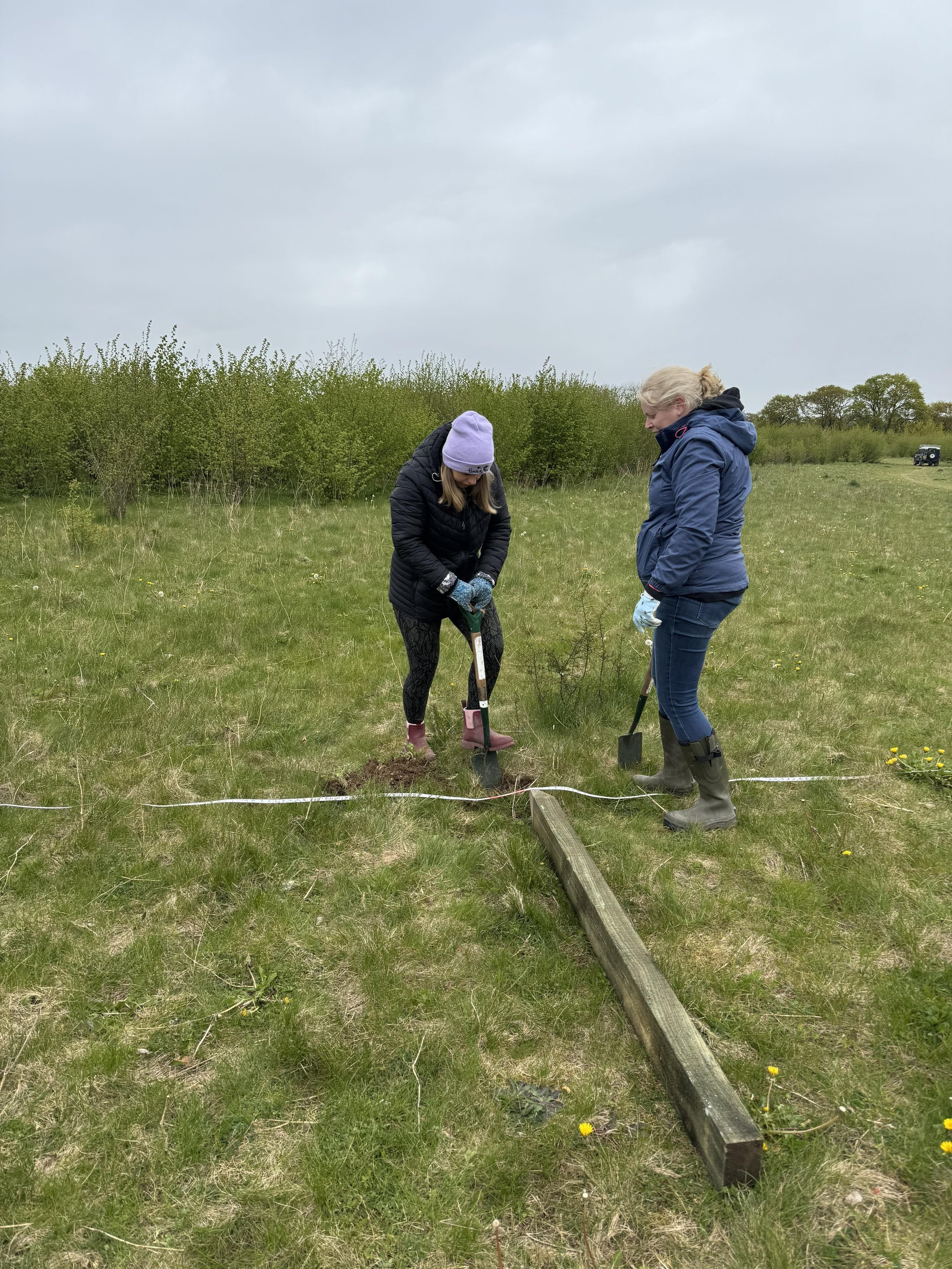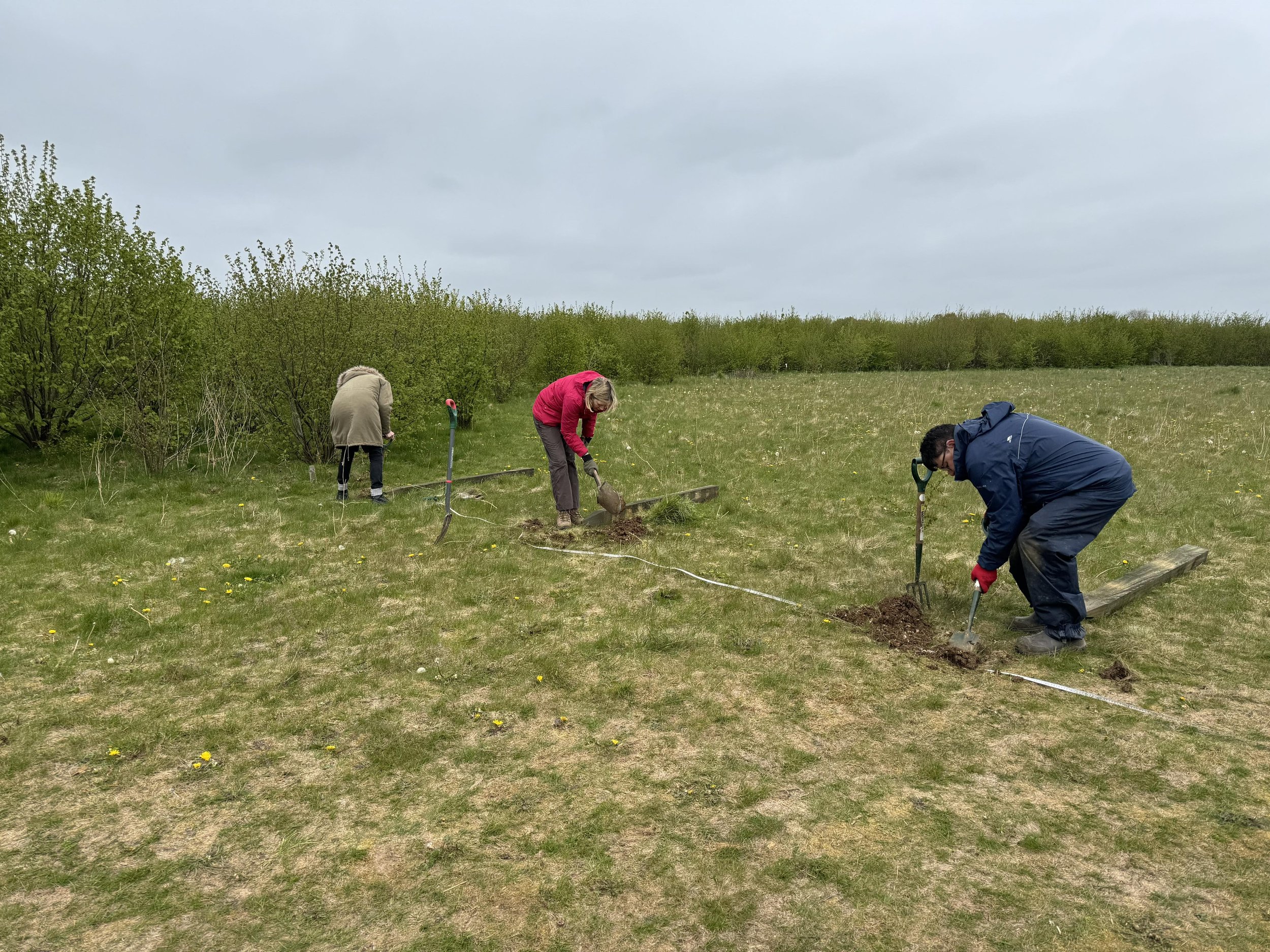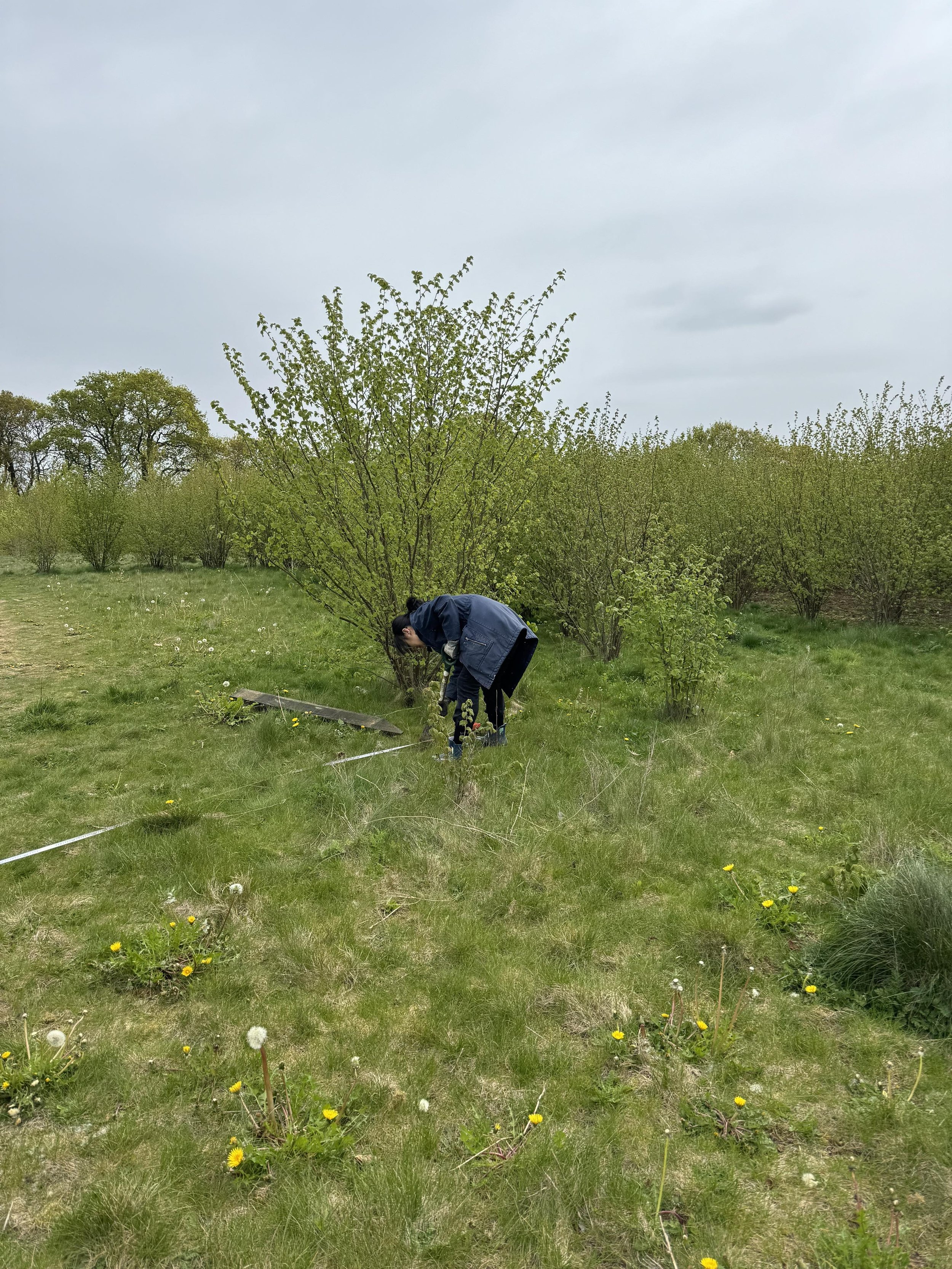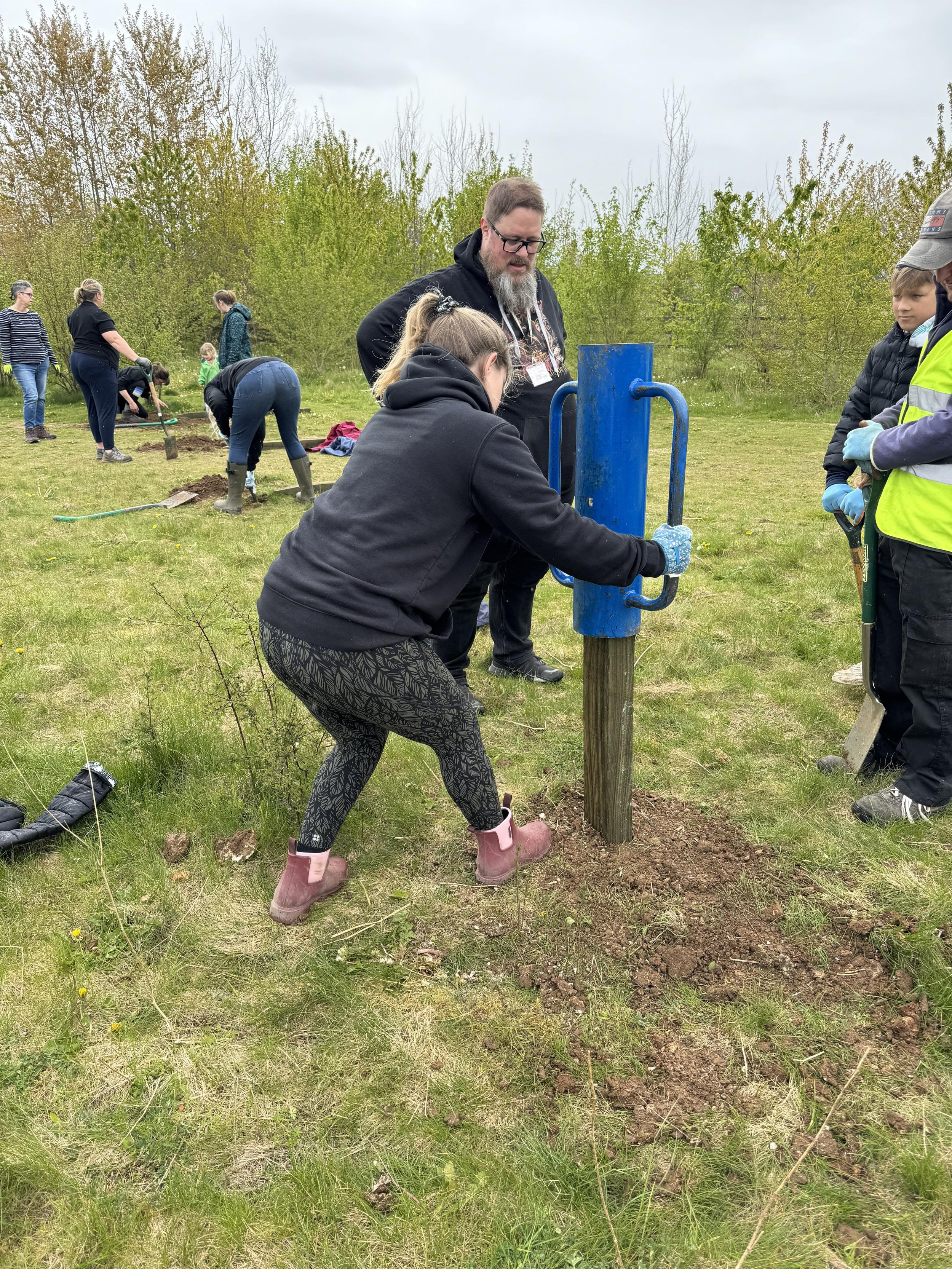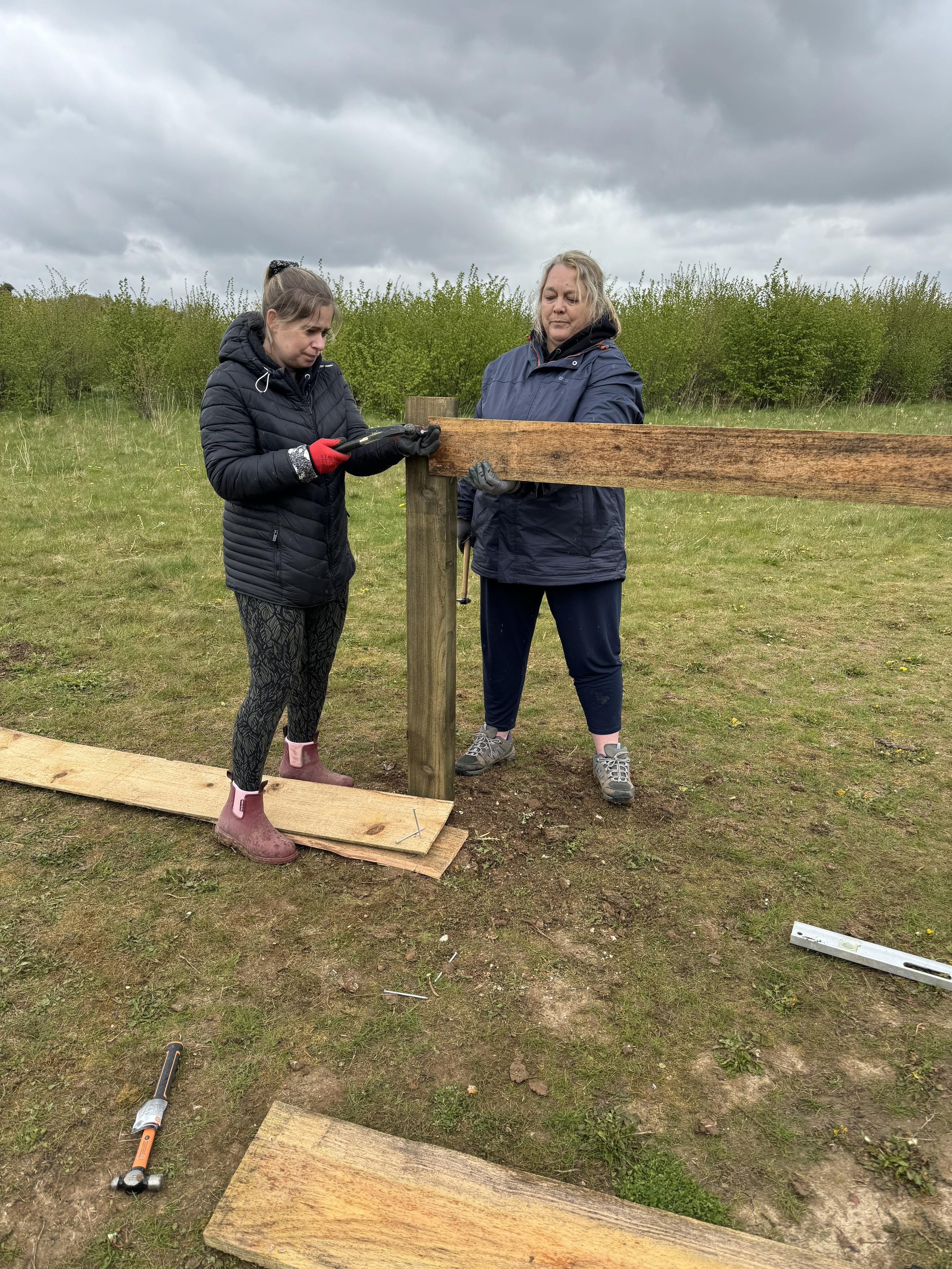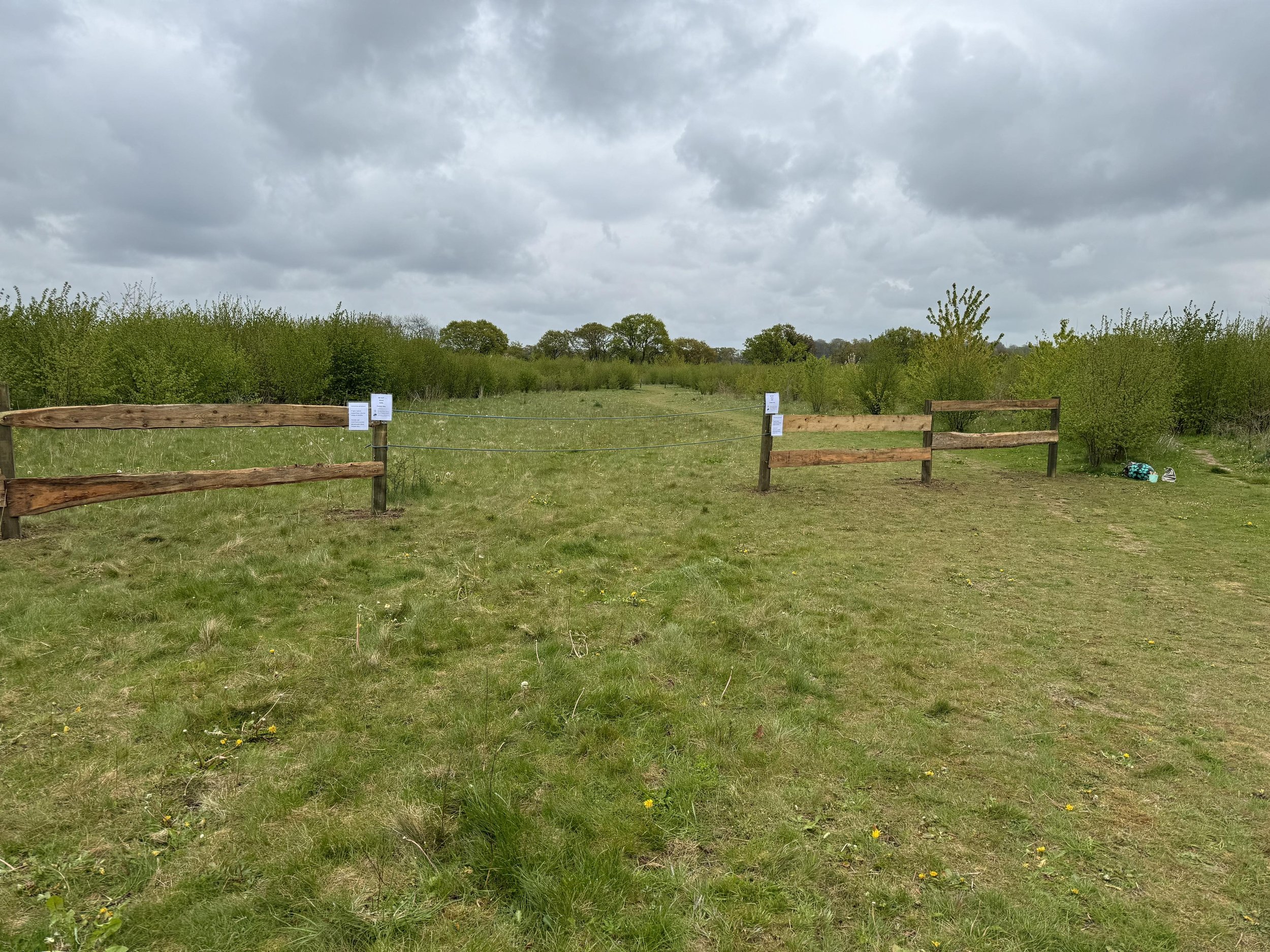HAPPY EARTH DAY!
Happy Earth Day! As the world celebrates Earth Day, Andover Trees United and National Geographic Learning have joined forces to embark on an exciting collaboration aimed at environmental conservation and sustainable development.
This Earth Day (April 22nd) Andover Trees United’s Volunteer Conservation Team and National Geographic Learning came together to begin improvements to the eastern end of the Diamond Woods. Earth Day is all about environmental protection and what better way to demonstrate that than creating fencing out of natural materials to help not only protect the endangered Skylark during their nesting season, but also beginning to prepare the eastern end of the wood ready for calcareous (chalk) meadow creation.
Photo by Abbey Sadler
Diamond Wood Improvements
Andover Trees United has plans to protect and improve biodiversity across the whole Diamond Wood over the next few years. We aim to help our visitors to access the woodland responsibly to conserve the nature that calls the wood home. The single Right of Way (RoW), the East Anton sports field/Smannell footpath, that crosses the wood will not be affected, but there are several ‘visitor-made’ paths that are impacting on soil and wildlife health. Other than the one Right of Way, all pathways are permissive and, as the wood grows and the needs of its inhabitants change, so will access routes and as of this week, some have begun to be changed.
The Volunteer Conservation Team and National Geographic Learning volunteers have created fencing that closes off one of the visitor-made pathways mentioned. Never a designated pathway anyway, the reasoning behind this is to return it to its former status as nesting site for the endangered Skylark and to begin to prepare the land between the fences to be transformed into a flower-rich, lowland calcareous (chalk) grassland meadow.
When you next visit the eastern end of the wood, please use the well-trodden pathway along the edge of the wood, through the trees to continue your walk.
The Importance of Lowland Calcareous Grassland
Lowland calcareous (chalk) grassland is considered an important habitat because it is one of Western Europe’s most diverse plant communities, supporting a whole range of wildlife including wildflowers, insects, mammals and birds. Often likened to a rainforest for biodiversity and carbon sequestration capacity, grassland can reduce greenhouse gases, which can help us in the fight against climate change!
As such it holds great importance to both experts and the local community. Created as a result of the synergy between the natural environment and traditional farming methods, the heritage holds great historical value and is particularly important to the local area as it forms part of its legacy.
Over the last 90 years, lowland calcareous grasslands have been degraded or lost mostly due to agricultural intensification. The lowland calcareous grassland in Andover, Hampshire is no exception to this. In addition to direct loss, the town is a booming economic centre that has resulted in particularly intensive pressure to change land use from grazing and/or open areas, resulting in sites losing plant diversity.
It has been a long-term goal of Andover Trees United to improve the lowland calcareous grassland for the whole Diamond Wood by creating further flower-rich meadows, at the eastern end of the Diamond Wood that mirror the improvements in the western ‘Harmony Woods’ end.
Look out for more information on all of this and how to get involved in the local press and on our website, where you can subscribe to our monthly newsletter - ideal for keeping fully up-to-date.

